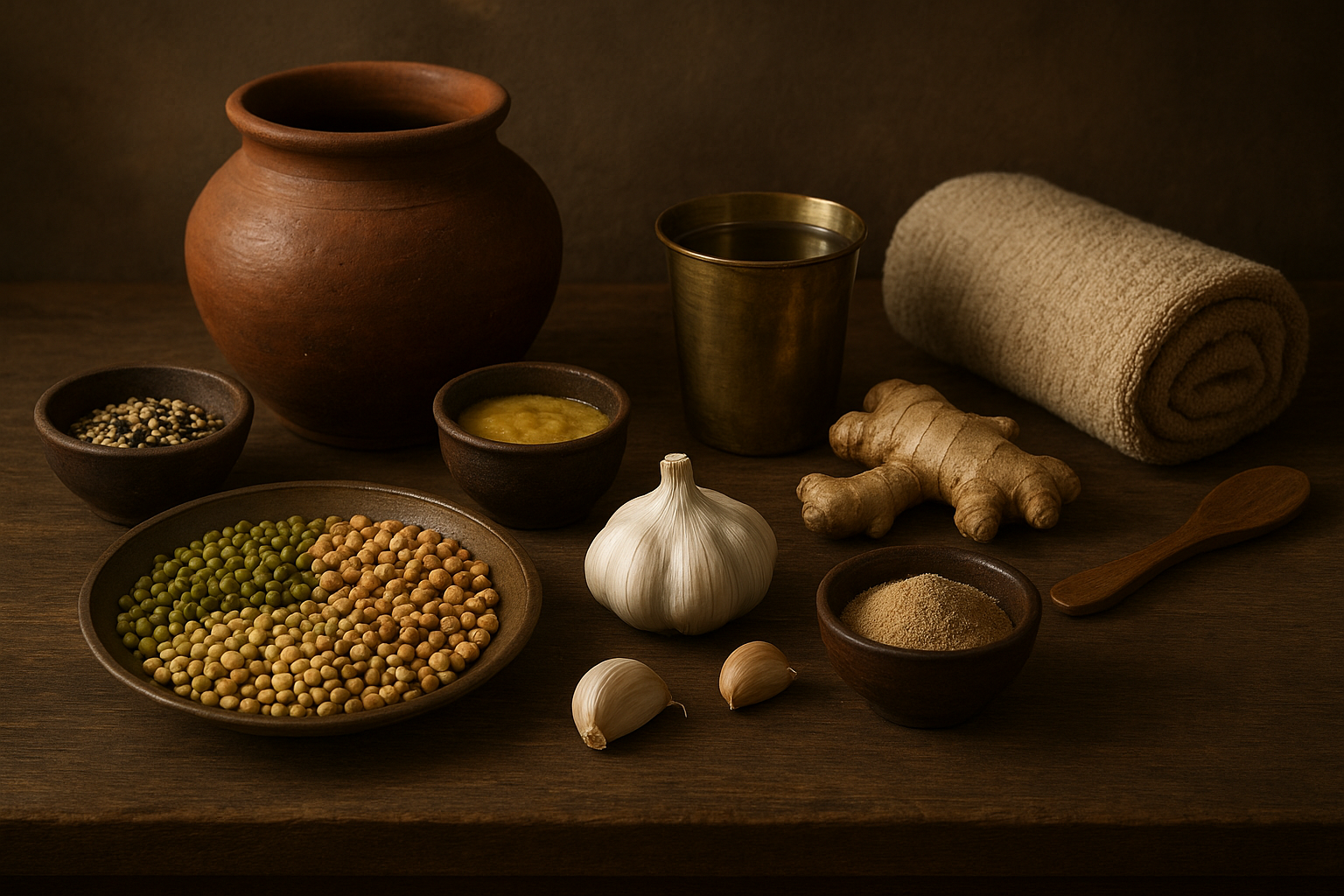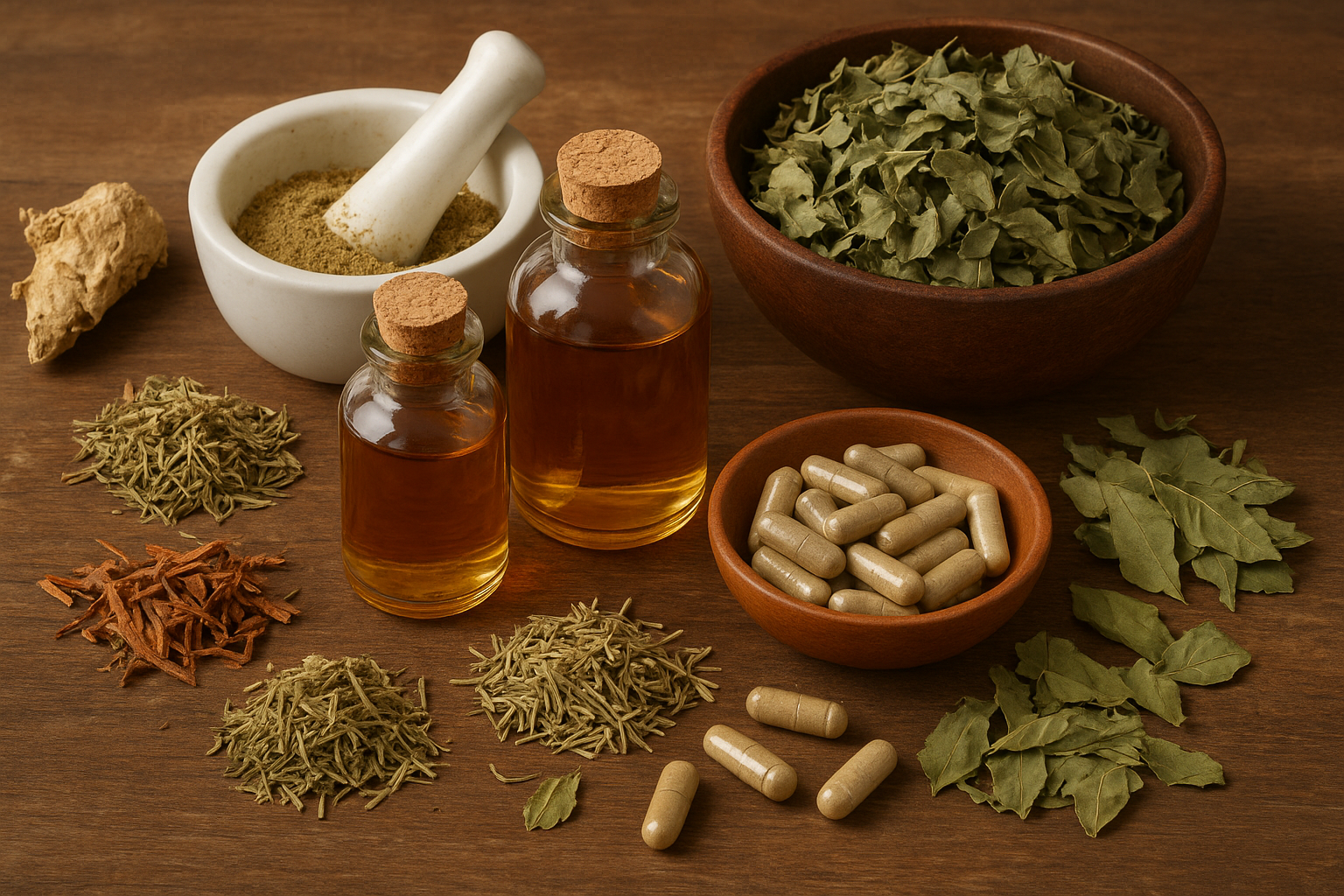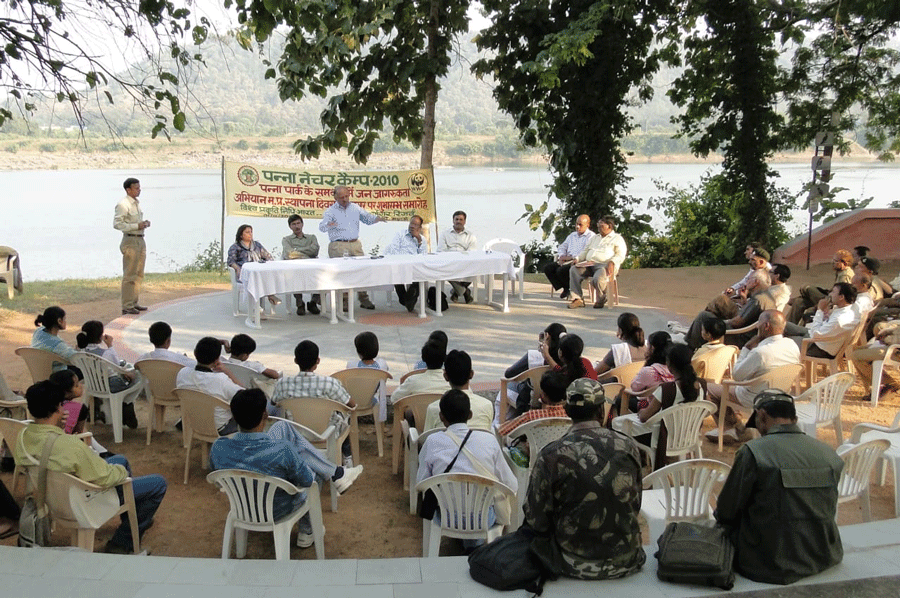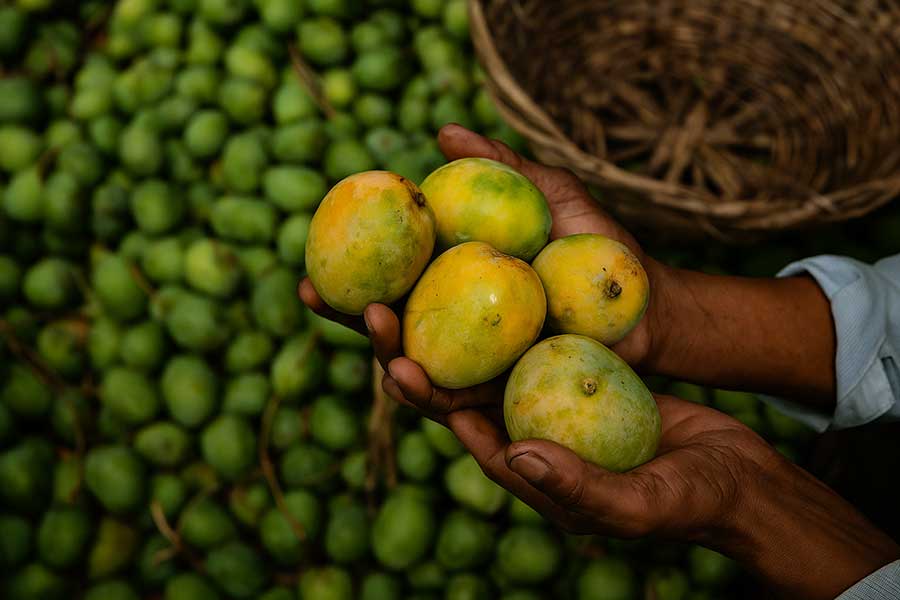EFFECTS OF CLIMATE CHANGE ON FRUIT PRODUCTION (A COMPREHENSIVE REVIEW)
– Shivani Kumari Deepak Lall Shrasti Sharma
Abstract:
Climate change poses a significant threat to horticultural fruit crops due to shifting temperature, rainfall patterns, and increased extreme weather events. Tropical, subtropical, and temperate fruits require specific climatic conditions for optimal growth, and deviations from these conditions can harm yield and quality. Temperature, rainfall, CO2 levels, and pests influence fruit production, with excessive heat causing stress, poor germination, and reduced fruit set, while both too much and too little rainfall lead to crop losses. Elevated CO2 may initially boost growth but can worsen heat stress and pest outbreaks. Pest and disease dynamics are further exacerbated by warming temperatures. Adaptive strategies, such as developing resistant varieties, optimizing irrigation, and using mulching and anti-transpirants, are essential to mitigate these effects. Mitigation efforts like agroforestry, energy efficiency, and sustainable farming practices are critical to addressing the root causes of climate change. This review emphasizes the need for integrated mitigation and adaptation strategies to ensure sustainable fruit crop production and secure food systems. Key words: Climate change, Horticultural crops, Sustainable agriculture, Climate mitigation, adaptation.
Introduction:
Climate refers to long-term patterns of temperature, humidity, wind, precipitation, and other atmospheric conditions in a region, distinct from short-term weather. Climate change denotes substantial, lasting shifts in Earth’s climate, primarily driven by human activities, although natural factors like volcanic eruptions have historically played a role. Over the past century, the global mean temperature has increased by 0.74°C, with projections indicating a rise of 1.8-4°C by 2100. This warming is associated with increased rainfall variability and more frequent extreme weather events such as droughts, floods, heat waves, and cold waves. These climatic changes pose significant challenges to agricultural production, affecting both annual and perennial crops, as crop growth and yield depend on meeting optimal climatic conditions.
Impact of climate change on horticultural fruit crops:
Different fruit crops require specific climatic conditions for their growth and development. Tropical fruits (such as Mango, Banana, Papaya, Jackfruit, Sapota, Guava, Pineapple, Coconut, and Cashew) thrive in hot and humid climates. Subtropical fruits (including Ber, Aonla, Bael, Pomegranate, Phalsa, Karonda, Date Palm, Fig, Litchi, Jamun, and Citrus) require hot and humid summers along with mild to cold winters. Temperate fruits (like Apple, Pear, Peach, Plum, Strawberry, Walnut, Almond, and Cherry) grow best in cooler winter. Due to climate change, any alterations in the typical climatic conditions can lead to a reduction in agricultural yields, ultimately impacting the income of farmers and the economy of India.
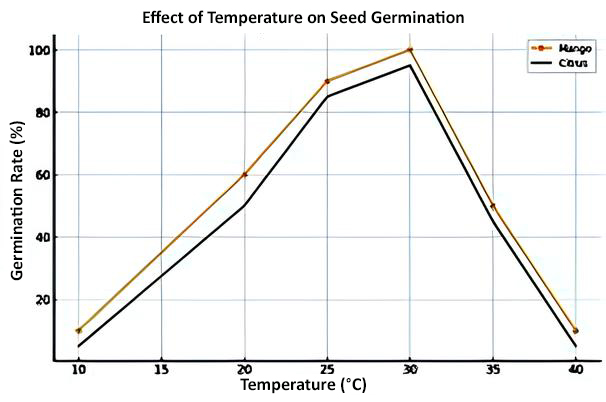
Temperature: Temperature is a key factor in plant growth and development, influencing nearly every physiological process, from seed germination to flowering and fruiting. The optimal temperature range supports peak metabolic activity, including photosynthesis, respiration, and nutrient absorption. Effect of temperature on germination: Temperature affects seed sprouting and seedling growth. Most fruit crops germinate best between 20-30°C, optimizing metabolic processes for efficient sprouting and healthy growth.
Heat stress, caused by high temperatures, damages seed cellular structure and inhibits germination. It accelerates moisture evaporation, causing seeds to dry out, and disrupts enzyme activity essential for processes like starch-to-sugar conversion. For example, temperatures above 35°C hinder mango and citrus germination, while high temperatures reduce apple seed germination. Low temperatures slow seed
metabolism, delaying or preventing germination. Freezing can cause physical damage through ice formation, leading to seed death. Temperate fruit seeds often require cold stratification to break dormancy. However, insufficient cold exposure or excessively low temperatures may prevent germination. For example, papaya germination slows below 20°C, and citrus below 10°C.
Effect of temperature on vegetative growth: High temperatures can accelerate growth but may cause stress, reduced leaf area, stunted growth, and increased water loss, leading to wilting and damaged photosynthetic machinery. In citrus, temperatures above 35°C cause leaf drop and suppressed growth. Low temperatures reduce metabolic activity, slowing growth, while freezing temperatures can damage young leaves, shoots, and buds, causing dieback.
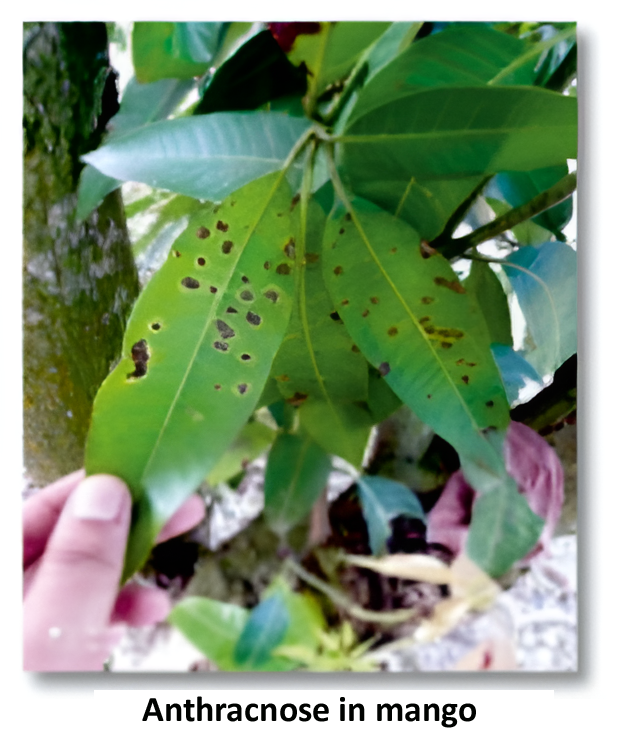
Effect of temperature on reproductive growth: On flowering- Sudden temperature drops can inhibit flowering in temperature-sensitive crops like papaya, where temperatures below 20°C suppress flowering and cause deformed flowers. High temperatures reduce flower size or cause flower drop, as seen in mango with temperatures above 35°C. On pollination and fertilization- Lower temperatures reduce pollinator activity, limiting cross-pollination and decreasing fertilization. In almonds, temperatures below 15°C during flowering decrease bee activity. Excessive heat dries out pollen grains or stigmas, further hindering successful fertilization. In fruit set- Low temperatures below 15°C during grape reproduction can impair fruit set. Heat stress during early fruit development causes immature fruit drop, while temperatures exceeding 35°C in citrus lead to fruit drop shortly after setting. On ripening- Lower temperatures slow ripening, extending the crop cycle. For bananas, temperatures below 20°C delay ripening. High temperatures accelerate ripening but shorten shelf life and increase disease risk. Grapes ripen faster at temperatures above 30°C, potentially reducing sugar content if not managed properly.
Effect on physiological disorders: Source: Mishra et al., 2016
| Fruit crops | Cause | Disorders |
| Mango | High temperature | Spongy tissue |
| Mango | Low temperature & Improper pollination | Jhumka |
| Mango | Improper pollination | Fruit drop |
| Citrus | High temperature & water moisture | Granulation |
| Grapes | High temperature | Pink berry formation |
| Grapes | High temperature, Improper pollination | Flower and berry drop |
| Aonla | Temperature | Unfruitfulness |
| Pomegranate | Variation in day and night temperature | Fruit cracking |
| Bael | Nutrients deficiency | Fruit cracking |
| Loquat | Temperature | Purple spot |
Rainfall: Rainfall significantly impacts fruit crop growth, with effects depending on timing, quantity, and crop requirements. Excessive rainfall in poorly drained areas depletes soil oxygen, hindering beneficial microorganisms and creating conditions conducive to pests and diseases, affecting yield. Rain during flowering, such as in apples and almonds, can lower pollination success, reducing fruit set. Additionally, rain before or during ripening can reduce fruit quality by diluting sugar content and flavor, as seen in grapes. In high rainfall areas, fruits are more prone to diseases like anthracnose in mangoes. For example, in Gujarat, unseasonal rain followed by heavy dew caused an 80-90% loss in mango production, reducing fruit set, increasing drop, and increasing the incidence of sooty mold and powdery mildew. Uneven or insufficient rainfall can drastically reduce crop yields, especially in rainfed areas. Water stress during key growth stages is critical, necessitating effective irrigation management in water-scarce regions. In citrus, inadequate water during crucial phases causes stunted growth, yellowing, and premature leaf drop, leading to smaller fruits with reduced juice content. Drought severely affects banana growth and productivity by reducing photosynthesis capacity. During the finger development stage, lack of water results in shorter bunches. Crops like tomatoes and cherries experience premature fruit cracking and dropping under drought conditions. Irrigation stress increases total soluble solids (TSS) content, while reducing water content in fruits.
Carbon Dioxide (CO2): The continuous rise in atmospheric CO2 is a major factor in climate change. In the short term, elevated CO2 can enhance photosynthesis, leading to improved growth and yields. However, the long-term impact is more complex, as changes in temperature, rainfall patterns, and increased pest and disease prevalence may offset the benefits. CO2 is crucial for photosynthesis, and its elevated concentration reduces stomatal conductance, stomatal aperture, and transpiration, leading to improved water use efficiency, increased growth, and enhanced photosynthesis. However, when high temperatures coincide with elevated CO2 levels, heat stress can affect crops like grapes and apples, leading to poor fruit set and sunburn damage. Elevated CO2 can also alter plant-pest interactions, strengthening plant defenses but potentially making some pests and diseases more aggressive. The increased temperatures and CO2 levels may benefit certain crops, with C4 plants showing more significant increases in photosynthesis rates compared to C3 plants. Additionally, in pomegranate, a warm and dry period during fruit development leads to the accumulation of proline, enhancing stress resistance.
Impact of climate change on pest and disease incidence: Climate change significantly influences the incidence and severity of pests and diseases by altering their distribution, abundance, and behavior. Warmer temperatures, shifting precipitation patterns, and increased humidity create favorable conditions for pests and pathogens, leading to more frequent outbreaks. For example, stormy rains can increase bacterial gummosis in pome and stone fruits. Tropical insects, which are adapted to specific conditions, are particularly vulnerable to warming temperatures. Conversely, in tropical regions, a decrease in specific vector insects could reduce the spread of viruses such as citrus leprosy, papaya ringspot, and pineapple wilt, which are transmitted by pests like mealy bugs and aphids. In mango varieties like Chausa, the development of fruit flies increases as temperatures rise from 20°C to 35°C. In bananas, the severity of burrowing nematode infestations is exacerbated by drier climates. Similarly, in apples, a 2°C rise in temperature could lead to an additional five generations of woolly aphids per year. These shifts highlight the need for adaptive management strategies to mitigate the effects of climate change on pest and disease dynamics.
Strategies to overcome the effect of climate change: To overcome the impact of climate change on fruit crops, several strategies can be employed to enhance resilience, maintain productivity, and mitigate the risks posed by changing climate conditions. These strategies include:
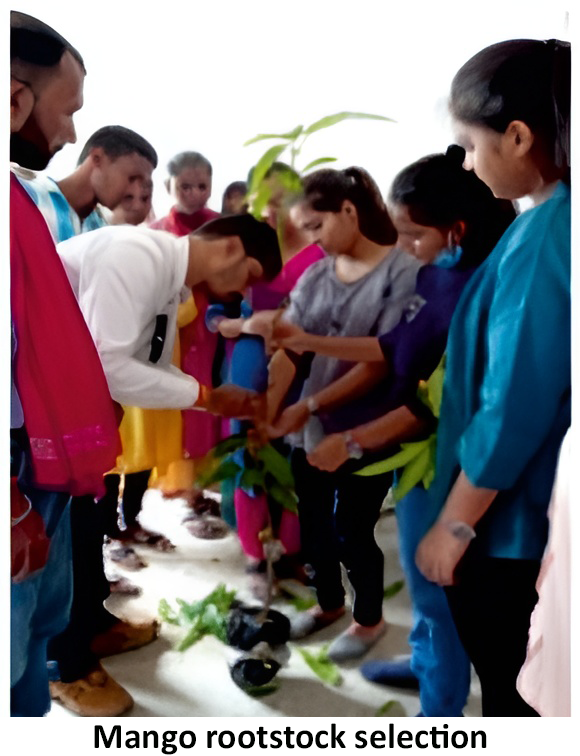
Mitigation strategies: Carbon sequestration through agroforestry and reforestation involves planting trees alongside agricultural systems to absorb CO2, store carbon in biomass and soil, and mitigate climate change. These practices enhance biodiversity, improve soil health, and promote sustainable farming. Additionally, minimizing synthetic fertilizers and encouraging organic farming reduce greenhouse gas emissions in fruit production. Improving energy efficiency through renewable energy sources for irrigation and processing further reduces the carbon footprint, supporting long-term environmental sustainability in the fruit industry.
Adaptation strategies:
Grow resistant varieties: Developing drought-tolerant, heat-resistant, and disease-resistant varieties can help crops withstand extreme conditions like heatwaves and water shortages. For example:
• Salt tolerant rootstock/variety: Mango (Nileshwar dwarf, Kurukkan, Bappakai), Citrus (Cleopatra mandarin), Lime (Rangpur lime), Grapes (Dogridge, 110R), Fig (Ficus glomerata).
• Mango rootstock selection
• Drought tolerant rootstock/variety: Sapota (Khirni), Citrus (Rangpur lime), Guava (Psidium cujavilis), Ber (Ziziphus nummularia, Ziziphus rotundifolia), Grape (110R, Dogridge).
• Insect-Pest and Diseases tolerant rootstock/variety: Guava (Psidium friedrichsthalianum- Nematode tolerant rootstock), Citrus (Rangpur lime-Phytophthora tolerant), Fig (Ficus glomerata-Nematode tolerant rootstock).
Monitoring Phonology: Close monitoring of nut, pome, and stone fruits’ growth stages helps tailor practices to changing environmental conditions.
Adjusting Planting Dates: Adjusting planting times and adopting integrated farming systems can optimize productivity.
Anti-Transpirants: These reduce water loss through transpiration. Examples include Phenyl Mercuric Acetate, oil, waxes, and Kaolin. Treatments like 2% chitosan have been shown to increase the weight of banana fruits, while Kaolin significantly reduces sunburn in pomegranate fruits.
Water Efficiency: Promote recycling of wastewater, solid waste, and implement water harvesting technologies to enhance resource use. Advanced water-saving technologies, such as efficient irrigation systems, can help optimize water use.
Mulching: Helps retain soil moisture, improve microclimates, boost microbial activity, and enhance soil health. Different mulches serve distinct purposes-silver mulch repels insects, black film controls weeds and transparent mulch aids solarization. Plastic mulch increases yields in crops like papaya, mango, and banana.
Conclusion: Climate plays a crucial role in the growth and development of fruit crops, with each crop having specific climatic requirements. Climate change presents significant challenges to the growth, yield, and quality of horticultural fruit crops, driven by shifts in temperature, altered rainfall patterns, and increased pest and disease incidence. However, in some cases, it can also stimulate beneficial plant activities. We can reduce its impact through strategic mitigation and adaptation practices. Mitigation measures such as carbon sequestration, reducing greenhouse gas emissions, and enhancing energy efficiency can address the underlying causes of climate change. At the same time, adaptive strategies like cultivating stress-tolerant varieties, adopting advanced irrigation and water-saving technologies, recycling resources, and using mulching and anti-transpirants can help fruit crops adapt to changing conditions. Collaborative research, innovative practices, and proactive policy interventions are vital to building resilience and ensuring sustainable horticultural production in the face of climate change.
References:
• Ahmed AY, Ahmed M. (2014). Impact of Spraying Some Antitranspirants on Fruiting of Williams Bananas Grown Under Aswan Region Conditions. Stem Cell; 5(4):34-39.
• Bhattacharjee P, Warang O, Das S, Das S. (2022). Impact of Climate Change on Fruit Crops: A Review. Curr World Environ; 17(2).
• Birhanu K, Tilahun K. (2010). Fruit yield and quality of drip irrigated tomato under deficit irrigation. African Journal of Food, Agriculture, Nutrition and Development; 10(2).
• Chadha, K.L. (2015). Global climate change and Indian horticulture. In: Chaudhary ML, Patel VB, Siddiqui MW, Verma RB (eds) Climate Dynamics in Horticultural Science: Impact, Adaptation and Mitigation, Volume 2. Apple Academic Press; 1-26.
• Ehteshami S, Sarikhani H, Ershadi A. (2011). Effect of kaolin and gibberellic acid application on some qualitative characteristics and reducing the sunburn in pomegranate fruits (Punica granatum) cv’rabab neiriz’.
• Fischer, G., et al. (2005). “Socioeconomic and climate change impacts on agriculture: an integrated assessment, 1990-2080.” Philosophical Transactions of the Royal Society B: Biological Sciences, 360(1463), 2067-2083. .
• Halilova H, Yildiz N. (2009). Does climate change have an effect on proline accumulation in pomegranate (Punica granatum L.) fruits. Sci. Res. Essays; 4(12):1543-1546.
• Holder GD, GD H. (1983). Effects of irrigation on the growth and yield of banana.
• Jones HG. (2004). Irrigation scheduling: advantages and pitfalls of plant-based methods. Journal of experimental botany; 55(407):2427-2436.
• Mahouachi J. (2007). Growth and mineral nutrient content of developing fruit on banana plants (Musa acuminate AAA, ‘Grand Nain’) subjected to water stress and recovery. The Journal of Horticultural Science and Biotechnology; 82(6):839-844.
• Mishra DS, Tripathi A, Nimbolkar PK. (2016). Review on physiological disorders of tropical and subtropical fruits: Causes and management approach. International Journal of Agriculture, Environment and Biotechnology; 9(6):925-935.
• Patil Shirish S, Kelkar Tushar S, Bhalerao Satish A. (2013). Mulching: A soil and water conservation practice. Research Journal of Agriculture and Forestry Sciences ISSN, 2320, 6063.
• Peng L, Wang C, He S, Guo C, Yan C. (2000). Effects of elevation and climatic factors on the fruit quaity of Navel orange. South China Fruits; 29(4):3-4.
• Rajatiya, J., Varu, D.K.*, Gohil, P., Solanki, M., Halepotara, F., Gohil, M., Mishra, P., & Solanki, R. (2018). “Climate Change: Impact, Mitigation, and Adaptation in Fruit Crops.” International Journal of Pure and Applied Bioscience; 6(6), 1161-1169. .
• Shetty PK, Ayyappan S, Swaminathan MS. (2013). Climate change and sustainable food security (NIAS Books and Special Publications No. SP4-2013). NIAS; ICAR. .
• Singh RN. (1966). Sex expression in mango with reference to prevailing temperature. In Proc. Amer. Soc. Hort. Sci; 89:228-230.
• Sun P, Mantri N, Lou H, Hu Y, Sun D, Zhu Y et al. (2012). Effects of elevated CO2 and temperature on yield and fruit quality of strawberry (Fragaria x ananassa Duch.) at two levels of nitrogen application. PloS one, 7(7).
• Venkateswarlu B, Shanker AK. (2012). Dryland agriculture: bringing resilience to crop production under changing climate. In Crop stress and its management: Perspectives and strategies, Springer, Dordrecht, 19-44p.
• Yamori W, Hikosaka K, Way DA. (2014). Temperature response of photosynthesis in C 3, C 4, and CAM plants: temperature acclimation and temperature adaptation. Photosynthesis research; 119(1-2):101-117.



1. P.G. Scholar, Department of Horticulture, Prof. Rajendra Singh University, Prayagraj U.P.
2. P.G. Scholar, Department of Horticulture, Sam Higginbottom University of Agriculture Technology and Sciences, Naini, Prayagraj, U.P.
3. Shivani Kumar Assistant Professor School of Agriculture Science K.K. University Bihar Sharif Nalanda





